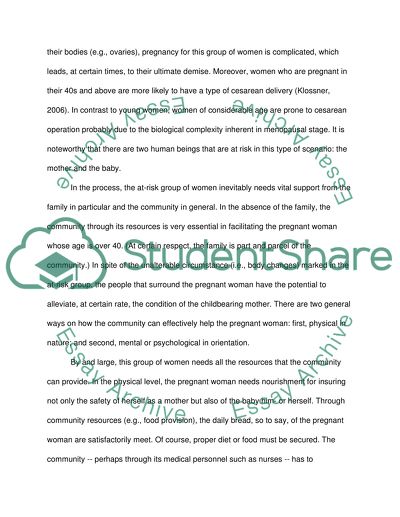Cite this document
(“Pregnant Women Whose Age is Over Forty Assignment - 1”, n.d.)
Retrieved from https://studentshare.org/social-science/1408160-community-resources-for-at-risk-groups-relating-to-childbearing
Retrieved from https://studentshare.org/social-science/1408160-community-resources-for-at-risk-groups-relating-to-childbearing
(Pregnant Women Whose Age Is Over Forty Assignment - 1)
https://studentshare.org/social-science/1408160-community-resources-for-at-risk-groups-relating-to-childbearing.
https://studentshare.org/social-science/1408160-community-resources-for-at-risk-groups-relating-to-childbearing.
“Pregnant Women Whose Age Is Over Forty Assignment - 1”, n.d. https://studentshare.org/social-science/1408160-community-resources-for-at-risk-groups-relating-to-childbearing.


